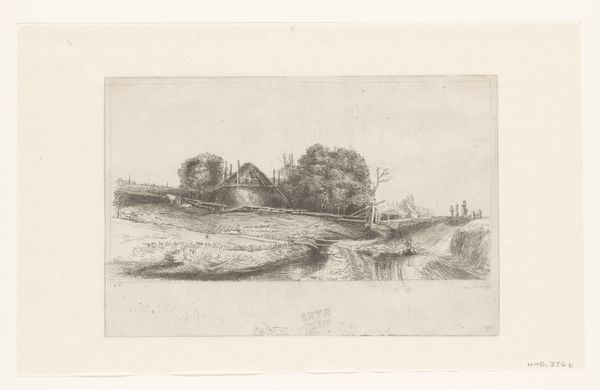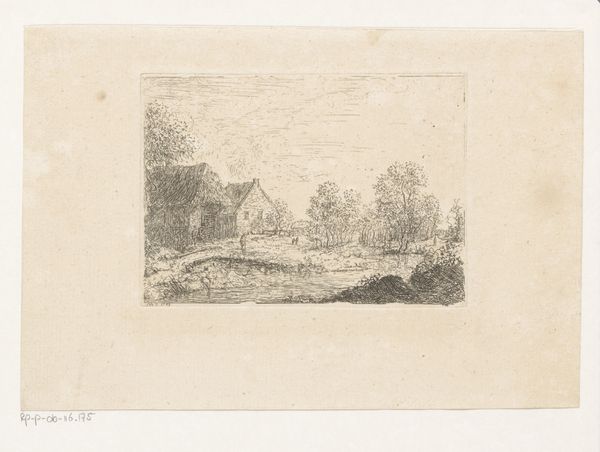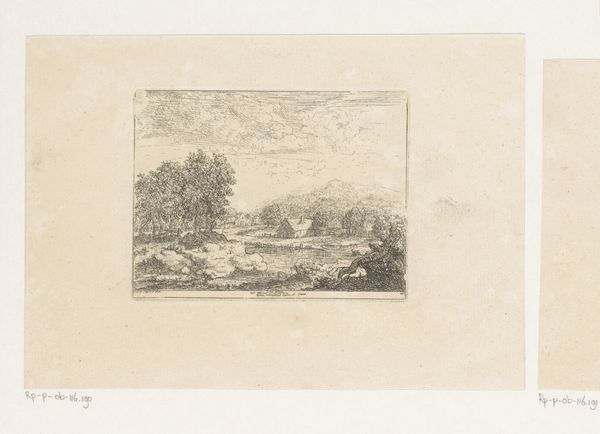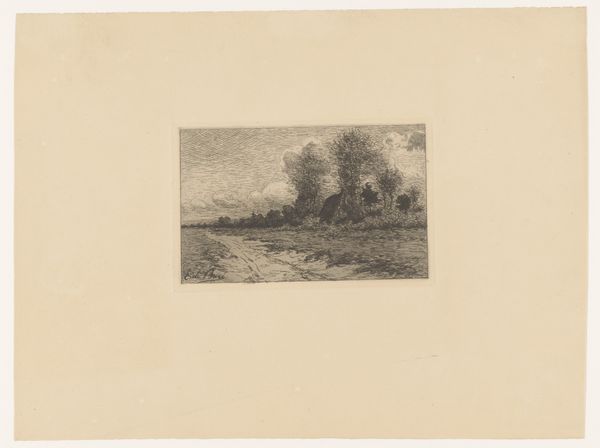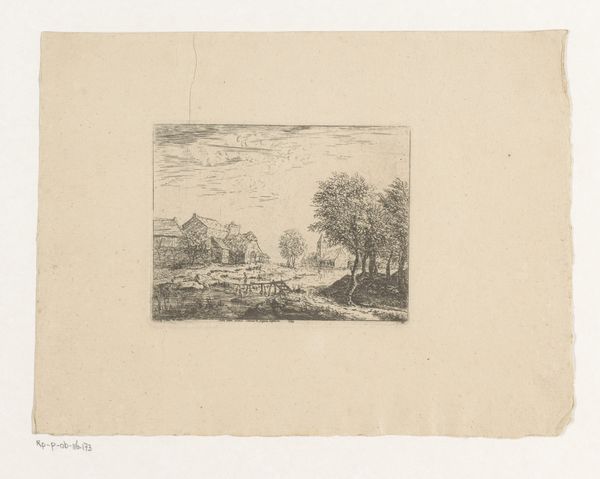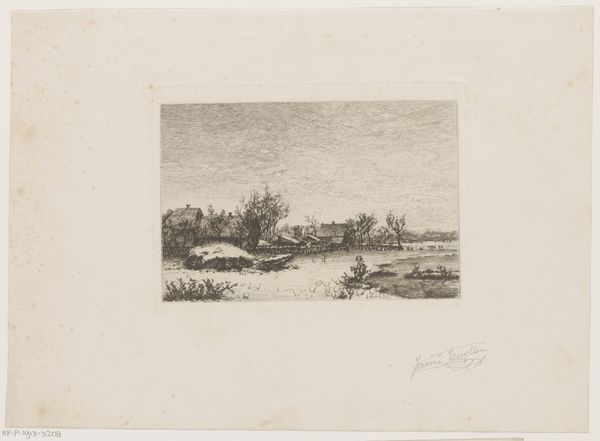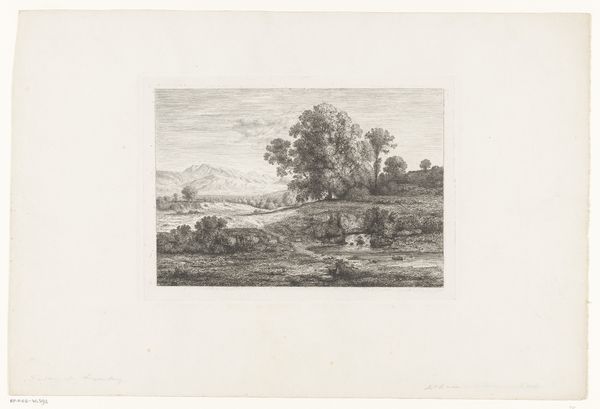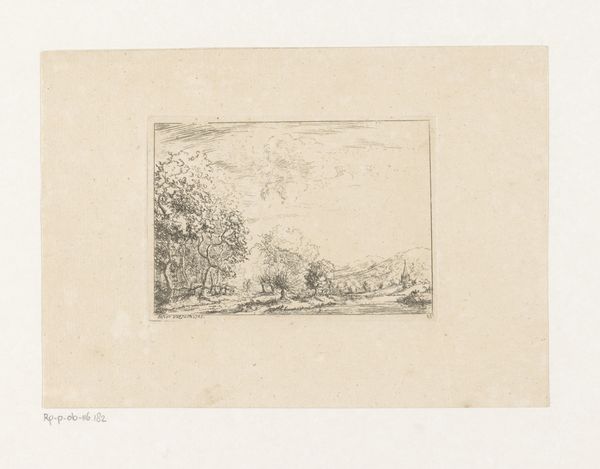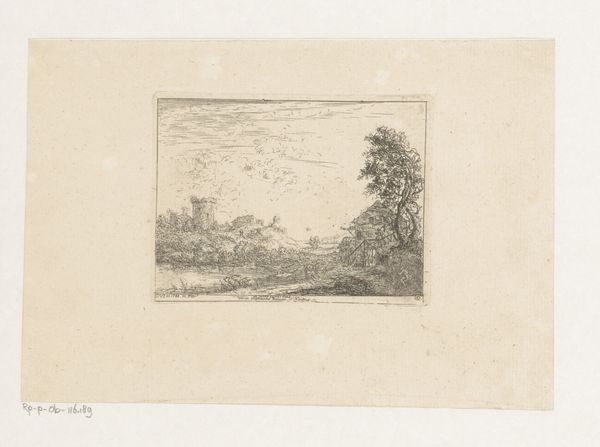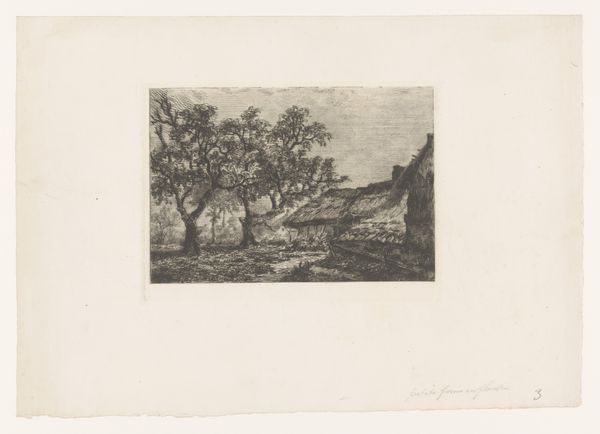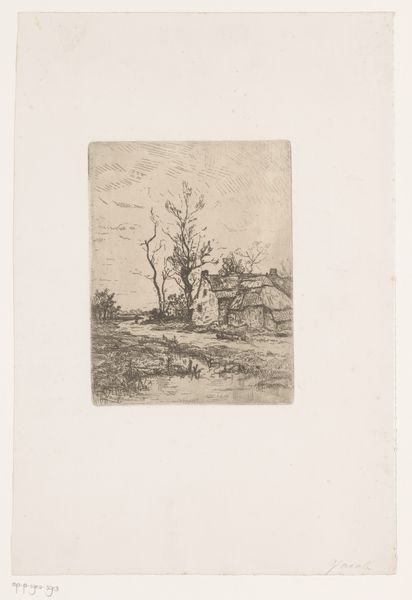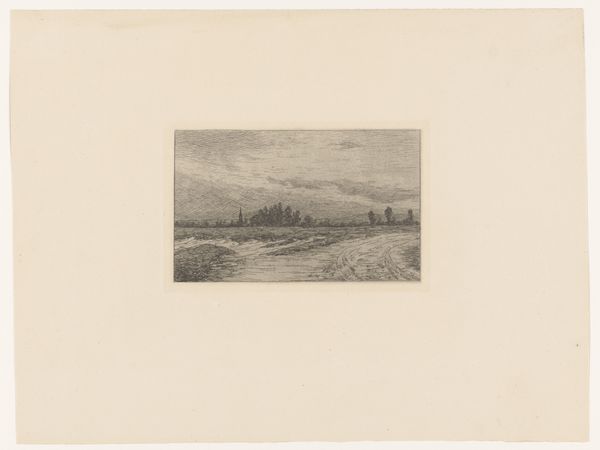
Cottages and a hay barn on the Diemerdijk with a flock of sheep 1728 - 1786
0:00
0:00
claudehenriwatelet
Rijksmuseum
drawing, pencil
#
pencil drawn
#
drawing
#
light pencil work
#
pencil sketch
#
landscape
#
pencil drawing
#
pencil
Dimensions: height 107 mm, width 190 mm
Copyright: Rijks Museum: Open Domain
Editor: Here we have "Cottages and a hay barn on the Diemerdijk with a flock of sheep" by Claude Henri Watelet, a pencil drawing from sometime between 1728 and 1786. The delicate pencil work gives the scene a quiet, almost melancholic feel. What strikes you about this piece? Curator: What I see are the conditions of production reflected in the imagery. Watelet wasn't just depicting a landscape; he was depicting a landscape shaped by labor, by agricultural practices. Notice how the composition itself directs our gaze to the intersection of nature and industry. The drawing embodies the means by which the land is cultivated, used, consumed, and how those actions produce what we might be tempted to call a purely "natural" scene. Editor: That's a very interesting take. I wouldn't have immediately considered that. So you’re saying that, the act of making a drawing like this—itself a kind of labor—connects with the other forms of labor represented? Curator: Precisely. The *way* the land is represented reflects not just aesthetic choices, but also the social and material circumstances of its production and its role in society. Consider also how the availability and price of drawing materials, like pencils and paper, would have impacted who could create and consume images like this. Were these landscapes for everyone, or just a certain class? Editor: So, viewing the "natural" landscape, or even a drawing *of* a landscape, requires understanding the socio-economic context within which it exists and was produced? Curator: Absolutely. By focusing on the materials and the mode of production, we avoid a purely aesthetic reading and engage with the realities of 18th-century Dutch society. It urges us to think about access and consumption. What looks like a simple drawing, then, opens up larger questions of labour, material reality and representation. Editor: I definitely see this work differently now! Thanks, it’s provided some fascinating new context for me. Curator: My pleasure! It's always enriching to consider how materials and labour shape our perception of the world around us.
Comments
No comments
Be the first to comment and join the conversation on the ultimate creative platform.
